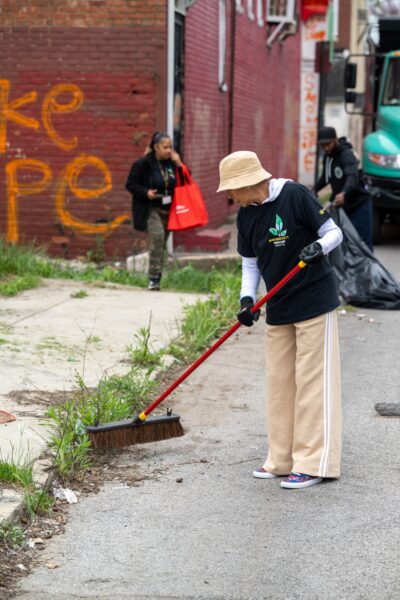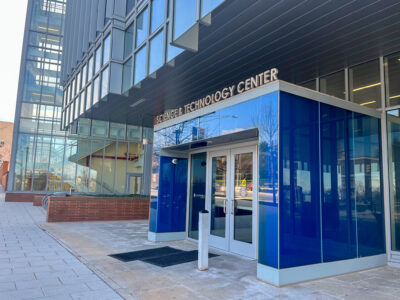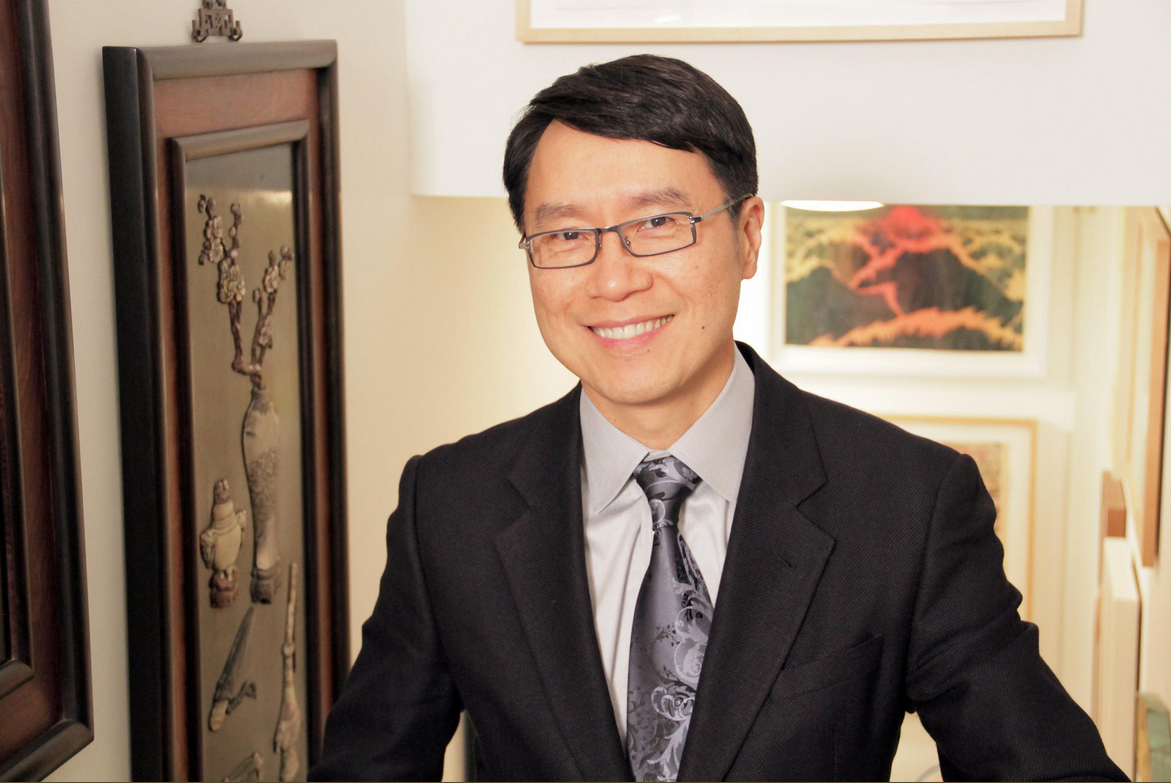Sammy Hoi left the prestigious Otis College of Art and Design in Los Angeles this summer. He came to Baltimore for a breath of fresh air.
“I’ve never found so many people with a common agenda,” said the new MICA president. “We are in it together. We are together, not fighting for a footprint in the city.”
In February when Hoi was announced as the art school’s next leader, following the 35-year tenure of Fred Lazarus, he was quick to begin catching up with the network of partnerships that his successor helped establish.
MICA is a tremendous anchor institution. They punch above their weight to make a social impact. That's unexpected of an art school.
Just six months after starting his new role, Hoi was quick to cite the creative collaborations happening at the intersection of arts and tech communities in Baltimore, much of it a short walk from MICA’s “open border” campus, as Hoi, 56, calls it. In a conversation in a conference room overlooking Mount Royal Street, this painter-turned-educator spoke as much about social impact as arts curriculum.
Hoi’s interest in the school’s adjacent neighborhoods comes with some authenticity: he has moved to Bolton Hill and can walk to work. In that time, he said, he’s learned plenty. He lived in D.C. for nine years and thought he knew Baltimore because of it, but, “you have to live in Baltimore to know Baltimore,” he said.
“D.C. is ambitious and aggressive. There is a sheen too it,” he said. “Baltimore has southern hospitality and northern grit.”
That’s party because of the struggles Baltimore has endured in the last half century or more, but it may also be what makes this city well suited for the future, he said. He sees a growing community of leaders who want a smarter, safer, friendlier Baltimore at all costs. In addition to this steady stream of new partners and ideas, there are institutions united around that singular goal.
He contrasted that with his 14 years in Los Angeles, where coalition building around the creative economy was “too chaotic to get traction.”
“I look to Baltimore as more coherent, cohesive environment where we can make concrete action together,” he said.
Below, we talk to Hoi about arts education, social impact and lessons drawn from Baltimore tech.
(Edited for length and clarity.)

Samuel Hoi speaking at his official installation as MICA president in October. (Photo courtesy of MICA)
How has arts education changed in your career?
When I was in school, learning illustration or painting came with very little context. Just be a creative person for myself and then maybe for a client. Later there was the idea that the world needed more creative input for more complex and richer solutions to come to the population at large. That is when we in arts education began the engagement of the curriculum with society.
Under Lazarus, MICA has taken on a role as neighborhood anchor, while also producing graduates who have contributed to Station North’s changes. Is that something that’s familiar to you?
When I first went to Otis, we made an economic argument for art and design being part of a great economy. Not only do artists and designers help us see the world in a different way through the poetic input, their work is also very proactively creating more vibrant communities.
They homestead and improve neighborhood through the arts work movement. Arts can be a center of community development.
With the Otis Report on the Creative Economy, we’re able to demonstrate this incredible economic impact in the Los Angeles region. This is a new future for all arts education.
And something you’d expect to continue here?
What’s exciting about MICA is our curriculum is socially engaged. We bring the traditional educational curriculum to very truly excellent artists who are committed to the practice but are also very socially aware.
That breadth of vision was not the case when I first went to arts school, but now that’s what a MICA graduate looks like and those of other elite arts schools.
Technology in arts education often means two things: how you teach students and what you teach students. First, how is MICA adapting with online learning options?
For all the hype, the MOOCs [massively open online courses] are not effective for 90 percent or more of who take them. Only the one to two percent who can maintain through it get anything out of them. It is simply not an effective pedagogical device.
But pairing learning through online content and through traditional face-to-face instruction can be more productive and optimal for learning, even more than just the traditional classroom.
So now how do you teach painting online? You take out what is repetitive, use online tools for sharing that repetition, and then the mentoring and the discourse and the critique can come in person. You can start online, but as it gets more complex, the in-classroom mentorship is indispensable.
Then the “what” of technology in arts education?
Technology is just an extension of the toolbox. Think 3D prototyping, or how you can bring in LED and robotic elements. It’s become so cheap, so affordable and accessible in so many ways. It’s expanded the repertoire, and we need to allow that.
You don’t know what artist you are until you know all your options.
Why MICA?
I’ve been friends with Fred Lazarus for 20 years. Otis and MICA have some of the most social engagement of any art schools.
We have just 2,200 students. We’re not a big school, but if you look at the city of Baltimore, MICA is a tremendous anchor institution. They punch above their weight to make a social impact. That’s unexpected of an art school.
Have you followed how MICA came to take on that bigger role?
Fifteen or 20 years ago, through a strategic examination of what MICA could be, under Fred’s leadership, MICA recognized that the school could not be strong unless Baltimore was strong.
The trustees invested in real estate development. It was not developing a gated campus. It was an open border to grow the art and design community with buildings that help to improve the neighborhood. For Bolton Hill, it enhanced safety and made it a more enjoyable, and for Station North, which was a blighted neighborhood, it was transformational homesteading.
It’s such a thoughtful way of using an art school’s self-development to develop a city at the same time. How wonderful.
That is completely in line with my life’s work.
How do you build on that in your tenure here?
Anything that would be systemic would have to be a partnership effort but MICA should take a lead to make a partnership effort to create an infrastructure to incubate and accelerate arts and design practices that have social impact.
Baltimore has numerous incubators and accelerators for small businesses like tech startups. I want to help Baltimore think about how do we create more comprehensive and acceleration systems for artists and design practices like that.
We could learn from tech startups and the accelerators that have grown here.
Are you competing with other American cities?
No, I don’t see competition. Baltimore is going to be different, it has to be. Baltimore will never be the kind of marketing center that Los Angeles and New York are. We are not going to have global art galleries, and that can be an advantage. New York is the global marketing center. But Baltimore is a center for creative production. Here the artists will come and make other people scout and sell the art elsewhere.
What is your personal mission here?
The American view of the arts is as something we like but is dispensable. Other cultures see it as vital. I make the case that it’s vital. In Baltimore, I hope to help illustrate the wide impact of artists and designers here to make the case that it is vital.
How do we turn a traditional art school inside out and make it a truly life long support system? I want to make a pipeline that would lead to the core of education but would also support alumni throughout their careers. I don’t think any art school has done that. We could invent a cradle-to-grave model for education.
Companies:
Maryland Institute College of Art
Join the conversation!
Find news, events, jobs and people who share your interests on Technical.ly's open community Slack

Baltimore daily roundup: HR's big AI-influenced shift; EDA Tech Hubs lessons; DCHD's $2.25M in grants

Baltimore daily roundup: Bowie State's esports reputation; AI impersonator arrested; EpiWatch names new CEO

Baltimore daily roundup: Real estate deal in the Peninsula; Missing $100M nitrile glove factory; Dirt bike clampdown


